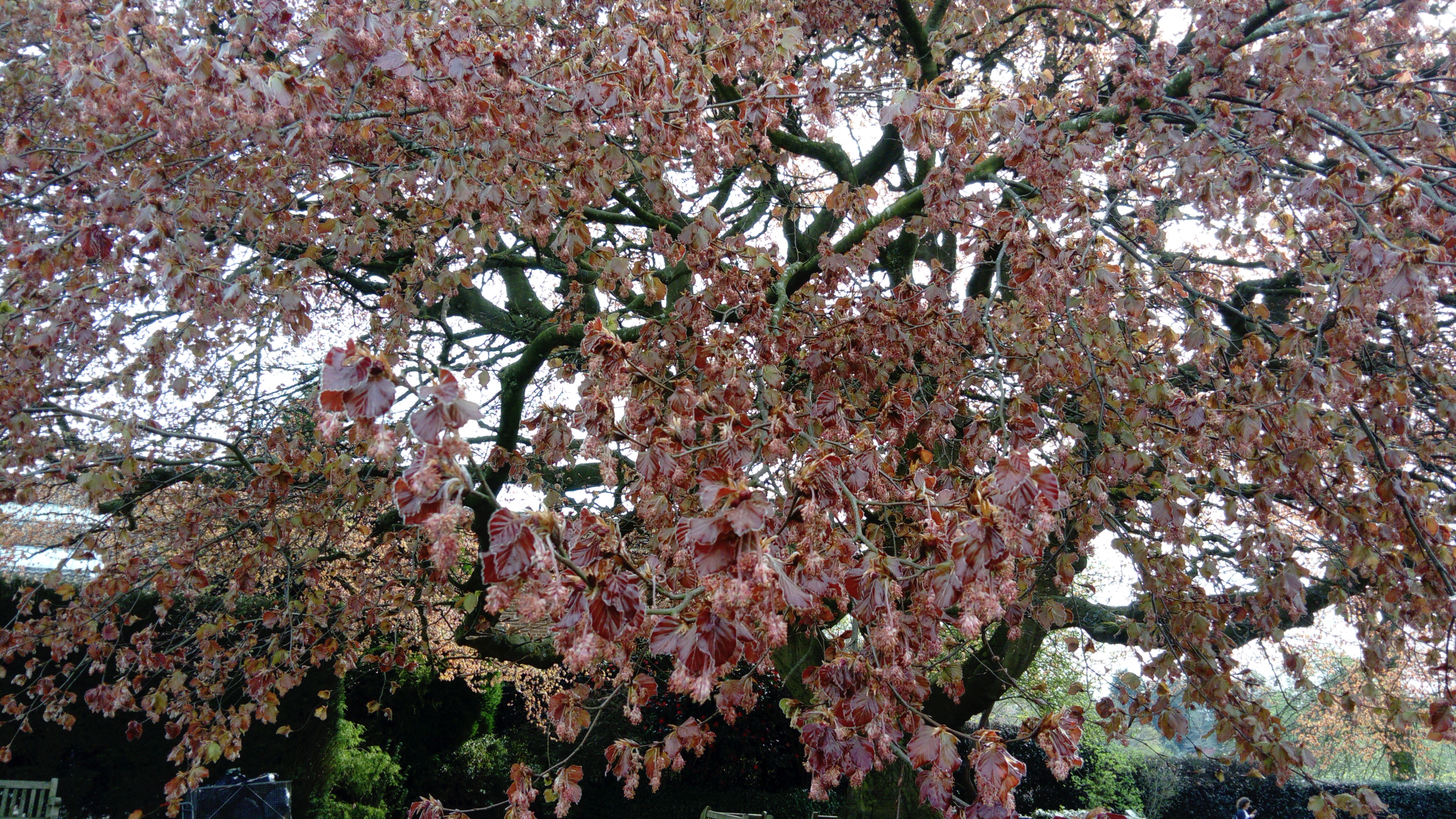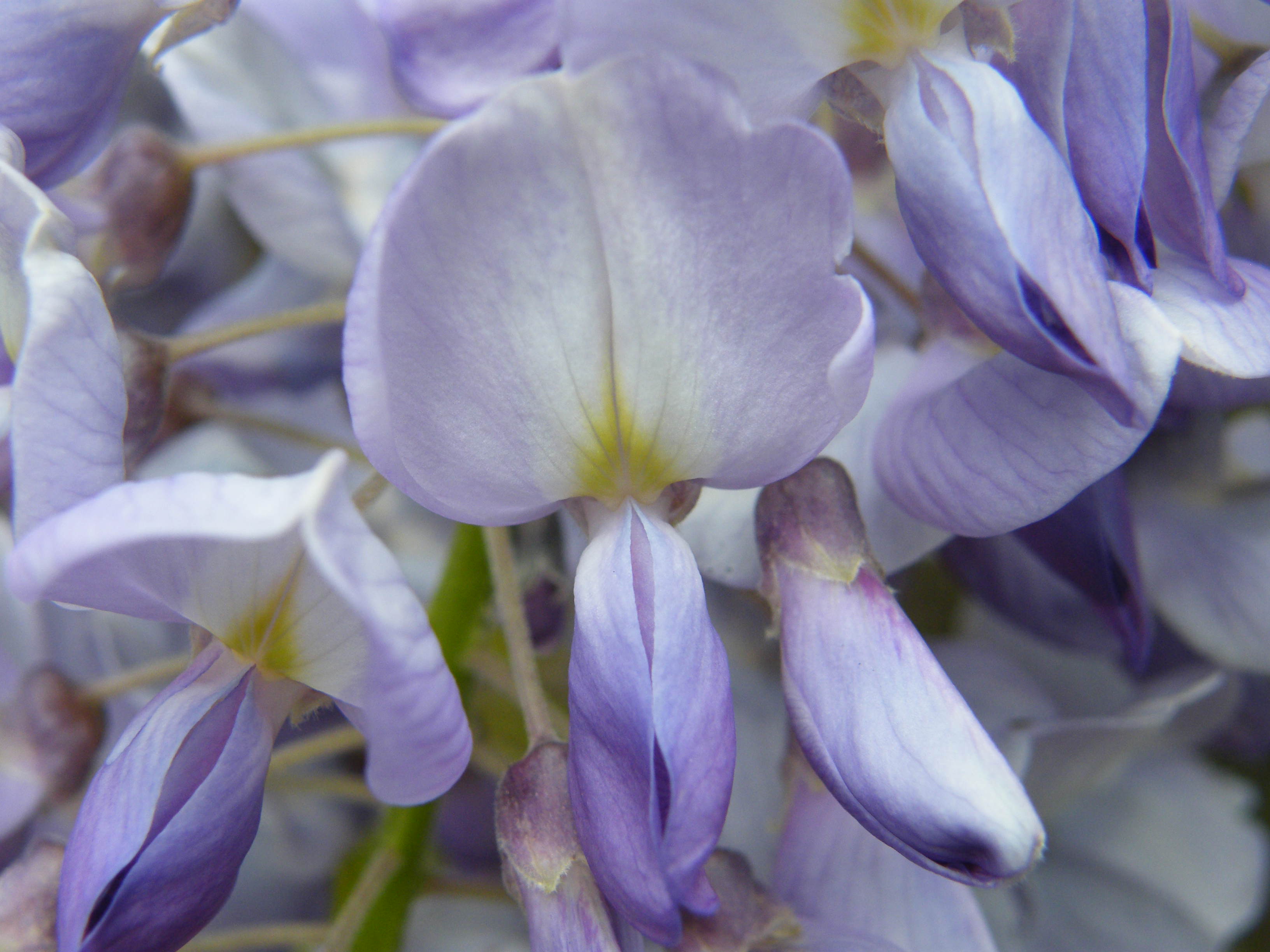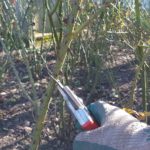Our on site team won gold for their National Collection of Cyclamen, a first for Birmingham Botanical Gardens!

Nigel Hopes, Horticultural Senior Supervisor (External Areas), who heads up the management of the National Collection, alongside the rest of the gardening team including, Wayne Williams (Senior Horticulturist (internal areas)), Chris Howell, Eddie Adams and Josh Tranter had a lot to say about this fantastic achievement and what it means for the gardens.
Nigel, what was it that attracted you to Cyclamen in particular?
My first encounter with Cyclamen was when I visited Ashwood Nurseries on a cold January morning when I was thirteen years old. I saw what appeared to be huge drifts of dainty and delicate pink, white and magenta flowers and I thought, ‘how on earth do they survive and flower during the winter?’ The little tiny Cyclamen that I was admiring was, of course, Cyclamen coum, which is incredibly hardy and can survive even the worst of the winter weather.
How did you get involved in the Cyclamen National Collection?
When I first started working at the gardens in 2005, the collection of Cyclamen was quite small with only a few potted specimens. I then brought in plants from my own collection at home and started propagating seed donations from Ashwood Nurseries in 2010, all of which sat alongside the colonies of Cyclamen hederifolium and Cyclamen coum that have always been planted in the open garden at the Birmingham Botanical Gardens.
Then, in 2012, our Plant Records Officer, and the Chairman of our Horticultural Committee Vic Aspland, mentioned the idea of trying to achieve ‘National Collection’ status. Vic is also president of the Cyclamen Society – the perfect person to have heading up this initiative. Over the years, more and more plants and seeds have been sourced and donated to us. Then, in 2015, we started pulling together the paper work for the collection; we also held regular meetings with the Plant Heritage Regional Coordinator, all in the hope of achieving the much-coveted ‘National Collection’ title. As of July 2016, we now own one of two National Cyclamen collections.
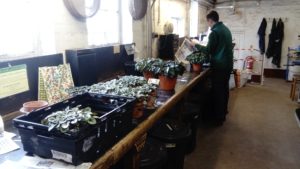
What’s your favorite Cyclamen and why?
Depends on the time of year, but I don’t really think that I could possibly pick one particular species out. They are all so stunning and have held my attention since I was young. Only something special can stay with you from 13 all the way up into adulthood.
How did you all prepare for the show as a team?
Nigel: It took six weeks of planning to workout the logistics of transporting the collection, as well as and sourcing what materials we would need to build a display from scratch. I also had to contact a tree nursery in Tenbury Wells called Frank P. Matthews at short notice. They were fantastic and kindly agreed to let us loan six-specimen Betula utilis var. jacquemontii ‘Snow Queen’ and a number of pines to form the backdrop of our display. Without these plants we could not have created the landscaped flora exhibit at the show.
I also wanted to make a number of educational interpretation boards as I wanted to encourage people to grow this wonderful genus in their own gardens.
Chris: To actually create the design itself we laid tarpaulin on the floor and marked it up with props before taking photos. This helped us to not only plan out the display but also to transport everything and be able to reconstruct it in London.
We were worried that the terracotta pots the Cyclamen were growing in would be too heavy for the tables at the show however, they held well and we were able to fill the gaps with newspaper, adding the final touches including the bark chippings and name labels.
What goes into preparing for a show like the RHS Early Spring Show?
Nigel: Generally, some exhibitors will plan everything out twelve months in advance, sometimes even longer depending on the exhibit. We didn’t have this much time and had to cram the whole process into a few weeks. Planning involved constant contact with suppliers and the RHS organisers to ensure everything ran smoothly. As well as this, all the plants must be at their best; the Birmingham Botanical Gardens team continually monitor and care for the collection all year round.
In addition, it took a while to plan how to get the plants to the show; it was a decision we took a lot of time over. You have to be very good at Tetris to pack the van and make sure everything is loaded safely and, above all, that the plants arrive at the Show in perfect condition.
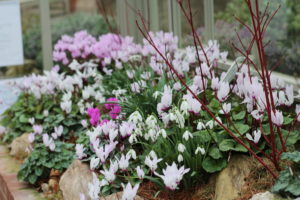
Nigel, where did funding come from, what did you have to do?
We were lucky enough to get sponsorship from the RHS. I attended a new exhibitors conference ran by Helen Boem at the Malvern Spring Show and subsequently applied for a new exhibitors bursary; a pot of money that the RHS offer annually to new exhibitors who have not exhibited at an RHS show before. However, we did not get the bursary because we were not a grower or nursery.
However, Helen then contacted me and told me that there maybe another opportunity for funding and that I should not give up just yet. A couple of months passed and I was contacted by the London Show Manager, Graeme Maynard, at the end of November to see if we would still be interested in exhibiting if the RHS sponsored us with two thirds of the money that we would need to exhibit at the RHS Early Spring Show. We jumped at the chance and were thrilled to be able to consider exhibiting again. Without the RHS, and the help of Helen Boem, Graeme Maynard and Dario Spagnoli, we would not have been able to exhibit the collection. A big thank you goes out to all that made it possible.
What are the benefits of presenting at an RHS Show, regardless of winning or not?
Nigel: Advertising, letting people know that we are in Birmingham and that we are an independent educational charity. It also allows the collection to be appreciated by people who attend these show.
Chris: Networking is key. We swapped numbers with a few other gardeners as we may consider swapping plants in the future. As well as this, reputation is another important point. As we have one of two National Cyclamen collections, we have a responsibility to show it off and exhibit them as much as we can. Not many people show Cyclamen and they aren’t big with the RHS, so many people rely on us for advice.
What does winning gold mean to you?
Nigel: Fantastic, it was worth all of the effort and the sleepless nights.
Josh: It was great that, as an apprentice, I could help the other gardeners on this project, and get the experience of a real RHS Show. Not every trainee gets this and I’m thrilled that, on top of that, we won gold!
What does winning gold mean for the Birmingham Botanical Gardens?
Nigel: It helps to raise the profile of the gardens and also open doors regarding more possible funding and sponsorship opportunities.
Wayne: Now that we have won gold, we are also going to be taken more seriously. We are very proud of what we have achieved at Birmingham Botanical Gardens and are thrilled that people are acknowledging the work we are putting in.
What did you enjoy most about the RHS Show and taking the Cyclamen along?
Nigel: That it was a real team effort and it’s an experience that we are never going to forget.
Chris: Yes, the buzz was amazing – the show was full on and is a first for a number of our gardeners. It was a good experience for them and amazing for all of us to be able to work together as a team on such a prestigious project.
It’s also great to be able to see what other gardeners are up to and what they are achieving. It gives us ideas for the future, but also allows us to appreciate different varieties of plants and the achievements of our contemporaries.
Wayne: I enjoyed interacting with the visitors, teaching them about Cyclamen and answering their questions. A common question about Cyclamen is their life expectancy. Many people think they are dead when they are actually dormant – not many people realise they have a dormancy period and it was great to be able to share that. We also had a lot of people asking if we sold them – sadly we don’t, but if you attend the National Cyclamen Society shows, they sell a wide variety of them. Just remember, it can take up to 3 years to get a flower!
What’s next for you and the gardens, any future shows?
Nigel: Only time will tell. If we were to exhibit at any other shows we would have to obtain sponsorship or a donation to allow us to have another opportunity.
What will happen to the display now?
Nigel: The plants have now been returned to their homes in the nursery, but plants from the show will appear in the Alpine house at the gardens. The display took around twenty-four hours to construct and only one and half to break up and pack into the van.
Vic Aspland, Chairman of the Horticultural Committee at Birmingham Botanical Gardens and president of the Cyclamen Society had this to say, “This was a great tribute to the contributions of many people. The Gardens’ horticultural team rose triumphantly to the challenge of staging the exhibit. I was lucky to recruit two volunteers (Roy Skidmore and Denise Bridges) who help to maintain the plants on a weekly basis, so there were plenty of good things to choose from. Quite a few of the plants in the collection were obtained through my numerous contacts in the horticultural world. Horticulturalists are well-known for their generosity in sharing plants! Some of the Cyclamen persicum used in the display were raised from seed collected in Jordan by the Centre d’Ecologie, Montpellier and sent to me some years ago. The interest in Cyclamen is international! The National Collection at the Botanical Gardens has many supporters and friends. I am sure that it will go from strength to strength.”

This is a fantastic achievement for Birmingham Botanical Gardens and is an experience the gardeners will never forget. We have a feeling they will enjoy plenty more success with this collection in the near future.
